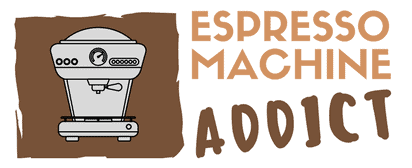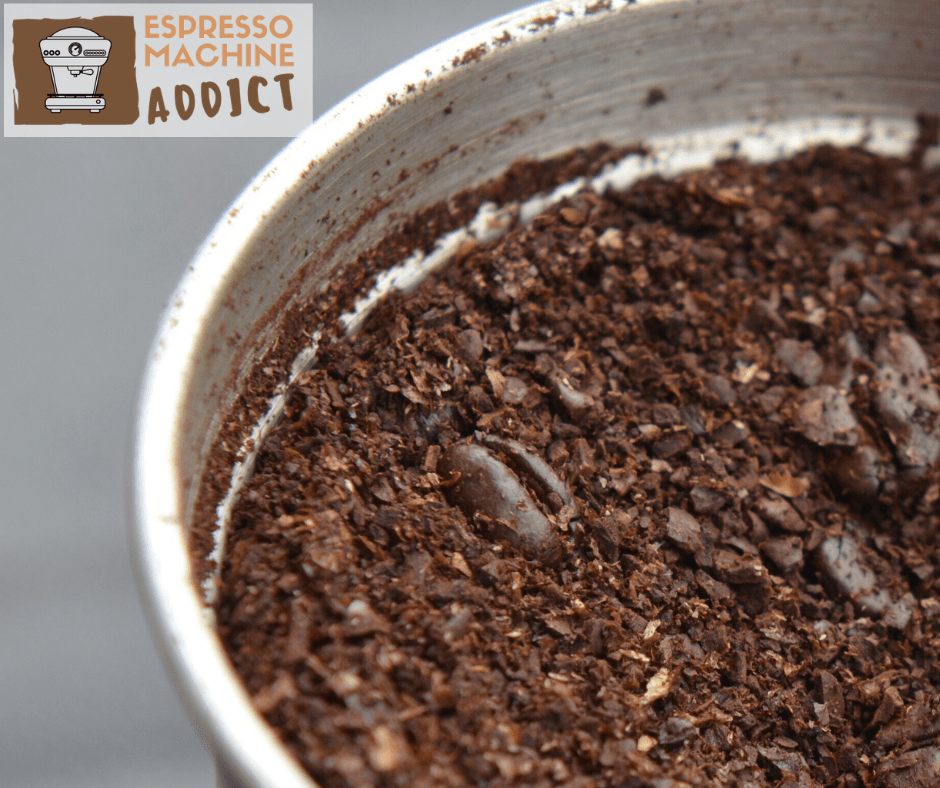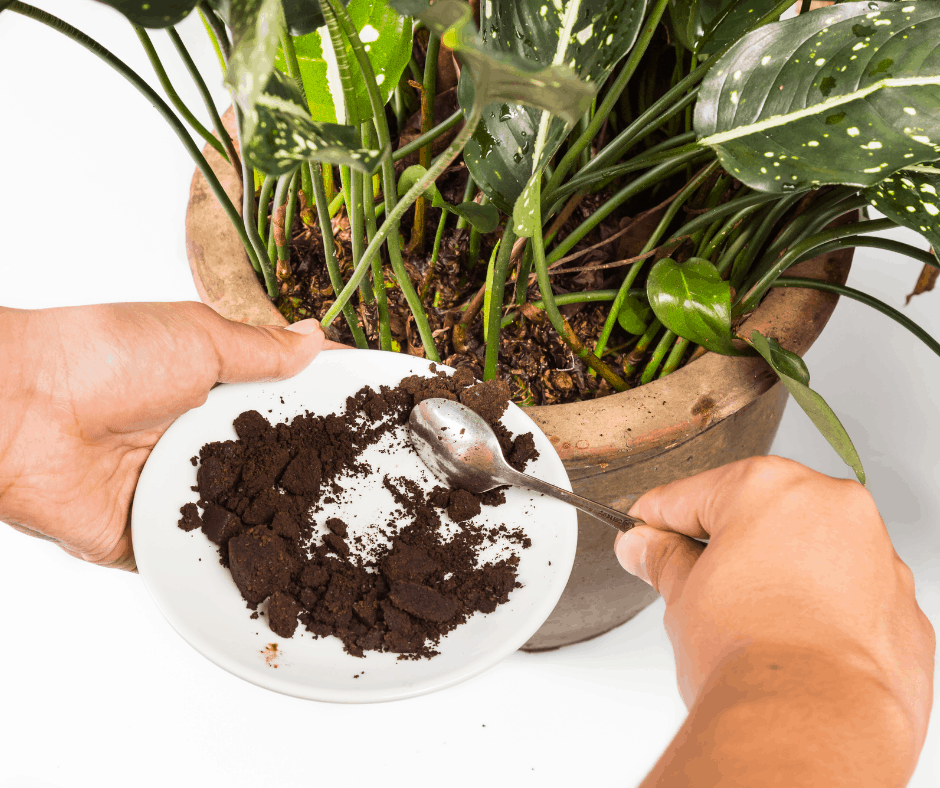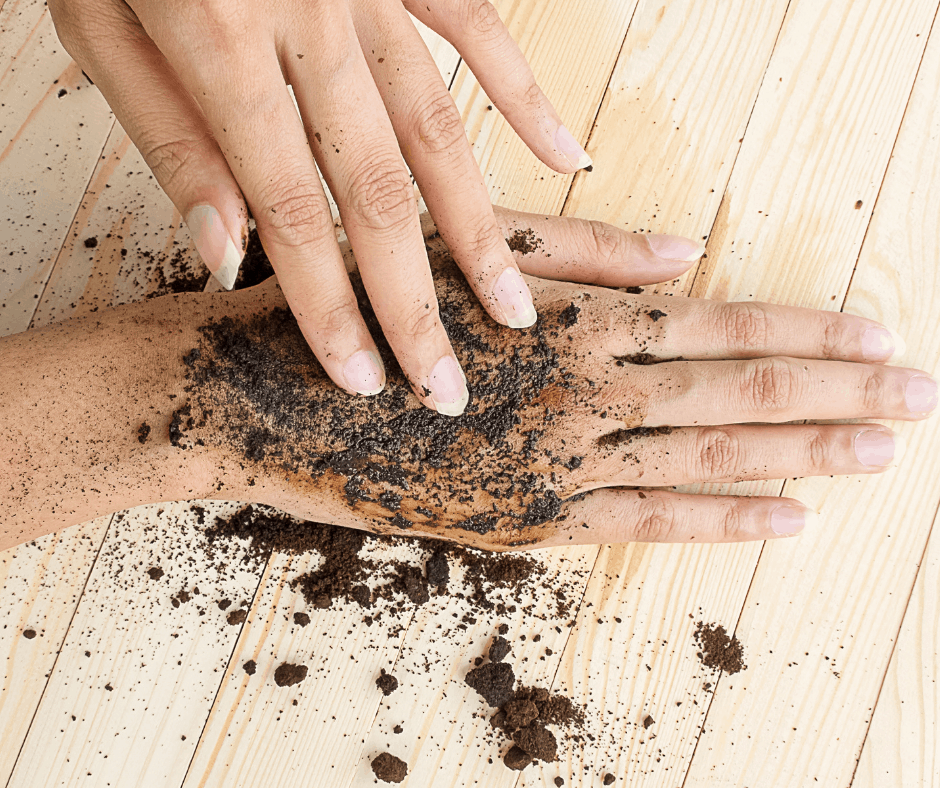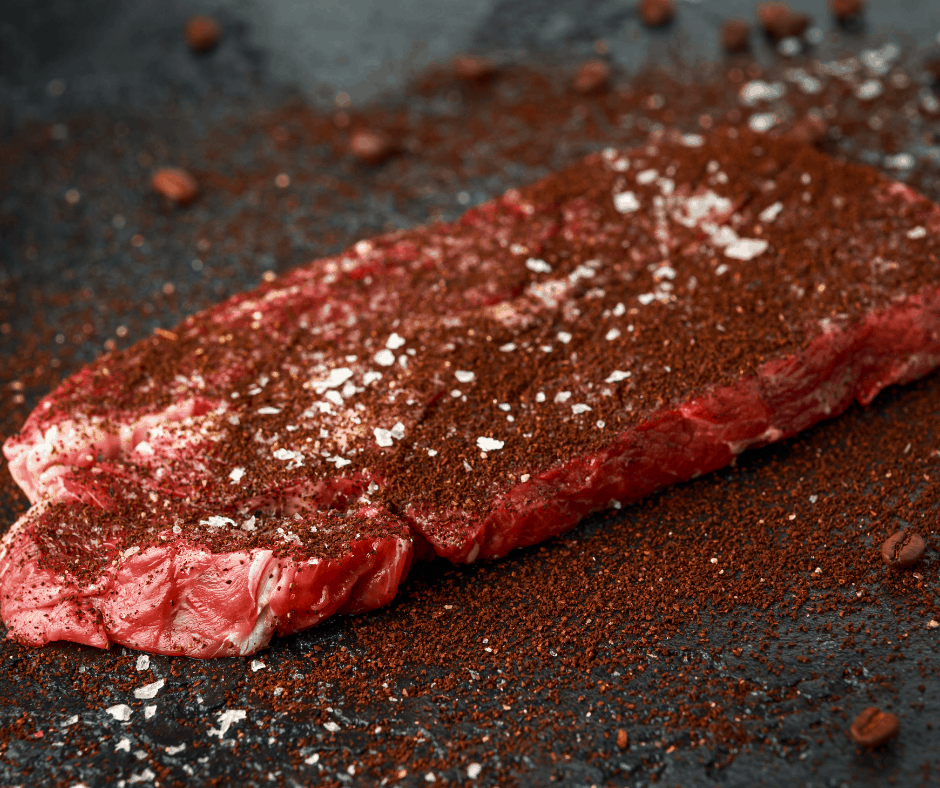What can coffee grounds be used for? It’s a question plenty of people ask. Old coffee grounds feel like an opportunity for anyone who enjoys the aroma of a freshly brewed cup. Plus, many people enjoy giving things a second life.
If you’re looking for things to do with used coffee grounds, there are certainly plenty of options. Here are ten genius uses for old coffee grounds anyone can try.
10 Genius Uses for Old Coffee Grounds
1. Using Old Coffee Grounds for Plants
One of the most classic ways to make the most of your spent coffee grounds is by using coffee grounds as fertilizer. A lot of soil lacks critical nutrients, preventing plants from getting all of the nutrition they need.
By working some coffee compost in your garden or planter soil, you can imbue it with nitrogen, potassium, calcium, and other crucial nutrients. Coffee grounds in the garden may also absorb heavy metal contaminates, making your soil healthier, as well as attract worms, leading to better aeration, water infiltration, and more.
If you’re wondering what plants like coffee grounds, the answer is anything that can benefit from a more acidic environment. Old coffee grounds, even those from your iced coffee, work well with certain berry plants and azaleas, for example, because they do well with some extra acidity.
Any soil that’s lacking in nitrogen may also benefit. For example, combining soil and coffee grounds in garden tomato planters can be beneficial if the soil is low in certain nutrients.
Using coffee grounds for hydrangeas is a favorite among gardeners because it can affect the color of the blooms. When soil acidity is higher, you’re more likely to get blue flowers on your hydrangeas, so you’re effectively controlling the hue.
Many people also ask, “Can you water plants with coffee?” After all, not everyone finishes the entire pot, and pouring the remaining coffee down the drain can feel like a waste.
If you dilute your leftover coffee, it is perfect for watering plants that need nitrogen. Just be sure you don’t add anything to it. Don’t pour your leftover coffee with cream or sugar in your plants!
2. Making Coffee Deodorizer
Did you know that you can use coffee grounds to eliminate odors? It’s true. The nitrogen can remove many foul smells from the air and surfaces, leaving the air fresher.
Making a coffee deodorizer is reasonably straightforward. Wait for the grounds to dry, then place your used coffee grounds in pantyhose and tie off the end. That way, you have a handy sachet that you can move. Set it in shoes, the fridge, or anywhere else that could use a refresh.
3. Crafting Coffee Grounds Mosquito Repellent
Many people are surprised when they hear they can use coffee grounds for mosquito control. Some of the compounds you find in coffee are harmful to insects, including mosquitos, so they tend to steer clear of the area.
Usually, all you need to do is put your old coffee grounds in containers and set them around your outdoor space. If you want to keep bugs away from your garden but don’t want to alter the soil, placing coffee grounds near or around the garden may help with that, too.
4. Creating a Flea Treatment Rinse
As mentioned above, many insects aren’t fans of coffee, and fleas aren’t an exception. While you can use traditional flea treatments, many rely on chemicals, and not everyone is comfortable with that.
If you’re looking for a more natural approach, creating a flea treatment rinse from your used coffee grounds is an option. Add some water and then pour it over your pet, working the grounds into the fur. Then, rinse thoroughly.
Ideally, you want to use decaf coffee grounds for flea treatments. Both cats and dogs are highly sensitive to caffeine. Since cats and dogs will often lick themselves when drying, decaf ensures they don’t ingest any caffeine.
5. Using Coffee Grounds to Remove Odors from Hands
When you’re cooking, foods like onions and garlic can leave a strong scent on your hands. Luckily, you can use coffee grounds to take care of the smell.
Place your spent coffee grounds in a jar or dish near your sink. Then, when you need to conquer an odor, scrub your hands with the coffee, rinsing thoroughly. Usually, that’s enough to tackle the smell.
6. Making a Scouring Scrub
Coffee grounds can be pretty coarse, making them an excellent option for scouring surfaces. For example, if you have buildup on your grill, trying using coffee grounds as a natural scrub. The rough texture will help loosen the debris, making it easier to wash away.
You can also use coffee grounds on cast iron pots and pans. Since avoiding chemicals is crucial with cast iron, a coffee-based scrub can be a great alternative.
Just make sure to only use coffee on scratch-resistant surfaces that are either nonporous or dark in color. Coffee can stain porous materials, turning lighter surfaces brown. Its rough texture can scratch delicate materials, as well.
7. Exfoliating with Used Coffee Grounds
Old coffee grounds can be a great option for creating a homemade skin or scalp scrub. The texture of the grounds works wonderfully for exfoliation. Plus, the caffeine may boost blood flow and can work as an antioxidant.
If you want to make it easier to use, try mixing the coffee ground with a bit of coconut oil. Not only will this help the mixture stay on, but it also has the added moisturizing from the oil, leaving your skin or hair softer.
8. Creating a Marinade or Rub
Coffee can be an excellent meat tenderizer thanks to the natural acids. By creating a marinade or rub with your spent coffee grounds, you get that benefit without having to use fresh grounds.
For a rub, let your grounds dry and then add them to the seasoning mix. Then, place the rub on the meat about two hours before cooking.
For a marinade, use the grounds to brew a cup or two of coffee. While the result may be a weaker flavor than you’d like to drink, it’s strong enough for this purpose.
Coffee marinades and rubs are most commonly used with beef, venison, lamb, pork, or other strong-flavored red meats. However, more adventurous types may appreciate it with chicken, too.
9. Staining Scratched Wood
If you have scratches on wooden furniture that are lighter than the rest of the surface, you can use coffee grounds as a natural stain. Simply mix them with a bit of water to create a paste. Then apply the paste to the scratch. Let it sit for five minutes before wiping it away to check the color. If the shade is too light, repeat the process.
10. Making Coffee Deicer
For anyone who lives in a colder climate, using coffee grounds as a deicer could be a great option. The nitrogen in the grounds creates a reaction that encourages melting.
In most cases, your coffee deicer is better on sidewalks or driveways where you aren’t worried about stains. Just be aware that the coffee grounds may stick to your shoes, causing you to track them into your home, car, or workplace.
Avoid using coffee deicer on vehicles, including windshields. The acid in the coffee could potentially damage the paint, even if it simply drips onto the surface. While most modern paints won’t be harmed by short-term contact, long-term exposure or certain older paints may see damage relatively quickly.
